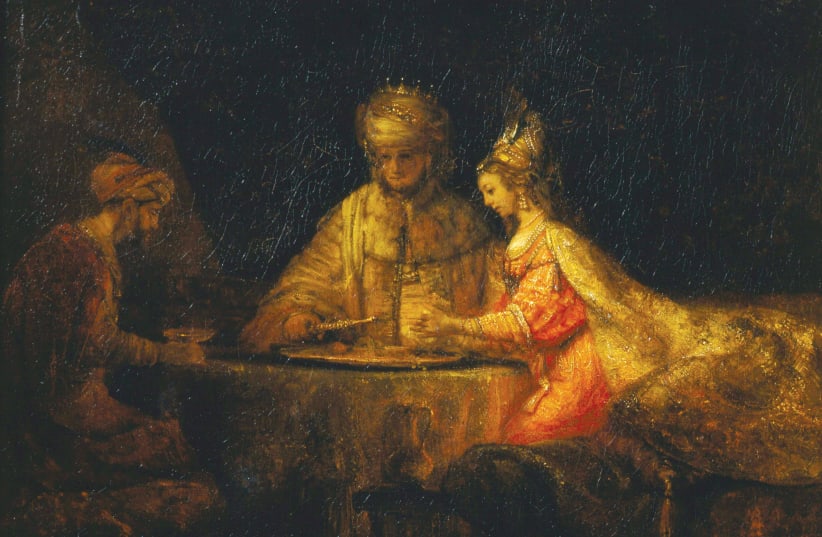Most of you probably read The Lottery, or the film that was made years later. The Lottery was written by Shirley Jackson in 1948. It begins in a small American town where children are piling up stones. The purpose of the annual lottery is to please an unnamed force for a good harvest. The whole town is happy because they didn’t win. But Tessie Hutchinson draws the ticket with the black mark and is sacrificed to insure a good harvest by the ancient method of stoning. It is a story about mob psychology and its dangers.
The name Esther shows the way. Esther can be read, “I will hide.”
What is Purim hiding? The ancient world of Mesopotamia tried to control the chaos in the world by protecting the king. If things went well for the king, it would go well for the populace.
Since the king had to be protected from the chaos, a substitute king was chosen by lottery annually.
King for a Day
The ancient Babylonians worshiped Morduch and Ishtar. Morduch dies every spring and then comes back to life. Part of the ancient 10-day festival included a lottery for a man chosen to be “King for a Day.” As all things backward in this sad tale, the lottery ended not in joy but in death. The substitute king for a day dressed in the royal robes and rode on the king’s horse. But he has to die so the actual king can keep on living.
Finally, the lottery-winning substitute king is told to get into bed with the queen and promptly he is arrested and hung. And so too in the Esther Megillah.
The tipsy Haman falls into Esther’s bed, just as the king enters the bedroom. And for that crime he is put to death.It is an old rule of anthropology that what religion can’t get rid of it takes over and gives new meaning.
The original story is so gory, most commentaries focus on the similarities; on Yom Kippur, and only on that day, the High Priest dresses up to enter the holy of holies, and Esther dresses specially to enter the king’s inner courtyard. Haman uses a lottery to determine the most propitious day to begin the slaughter of the Jews.
There is a lottery on Yom Kippur. Yom Kippur in the Torah tells about a lottery to choose between two goats. One will be slaughtered, and the other now called the scapegoat will be sent off into the wilderness carrying the sins of the people with him. In Jackson’s story, it is Tessie who becomes the scapegoat.
There is one more lottery. The Jonah Haftarah tells of how the exasperated sailors drew lots to determine who was causing their bad luck. A storm that was threatening their lives calmed immediately when they threw Jonah overboard.
Even in modern times, there is a lottery in many countries for citizens to receive the vaccine against the virus.■
The writer is a Reform rabbi who with his wife made aliyah in 2001. Before retiring, he served congregations in Cleveland, Ohio, and Lynbrook, New York
